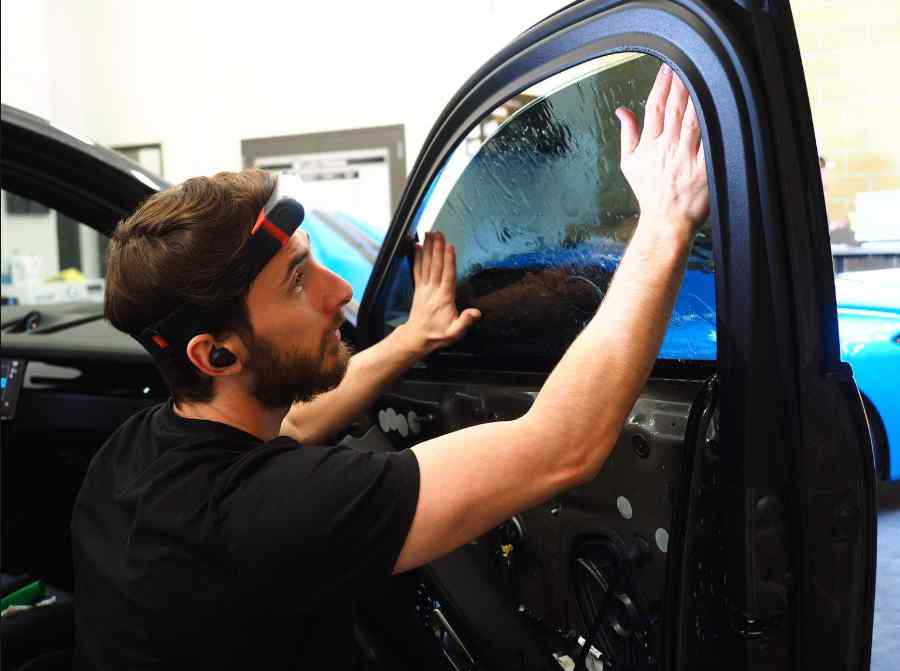What is Illegal Tint in Florida?
Having tinted windows can be a relief in the sunshine state of Florida, where the sun’s rays are as relentless as the waves crashing on its beaches. However, not all tints are created equal, and understanding what is considered illegal is crucial.
In this blog post, I’ll take you through the ins and outs of illegal tint in Florida, from the laws to enforcement and penalties, shedding light on what you need to know to stay on the right side of the law.
What is Illegal Tint in Florida?

Before diving into the legalities, let’s establish what constitutes illegal tint in Florida. Illegal tint refers to window tinting that goes beyond the limits set by the state’s regulations.
Florida law regulates the darkness of window tints based on Visible Light Transmission (VLT) percentages, which measure how much light can pass through the window.
Florida Tinting Laws Explained
Florida’s tinting laws are outlined in Florida Statute 316.2952. According to this statute, the regulations vary for vehicles such as passenger cars, multipurpose vehicles, and trucks.
The law sets the standard for permissible VLT percentages on other windows, including the windshield, front, and rear.
- Windshield: Florida law allows non-reflective tint on the windshield above the manufacturer’s AS-1 line or down to five inches, whichever comes first.
- Front Side Windows: The tint on the front side windows must allow more than 28% of light inside.
- Rear Side Windows and Rear Window: Tint on these windows can be as dark as the vehicle owner desires, but it must have a minimum VLT of 15%.
Understanding these regulations is crucial to avoid falling on the wrong side of the law. Going beyond these limits can result in penalties, affecting your driving record and pocket.
Others Post: What Color Lights Are Illegal on Cars in Florida?
Understanding Tint Darkness Levels

To comprehend the nuances of tint regulations, it’s essential to delve into tint darkness levels.
Tint darkness is measured by the VLT percentage, indicating the amount of visible light that passes through the tint. The lower the VLT percentage, the darker the tint.
- 50% VLT: Light tint, allowing more visibility.
- 35% VLT: Moderate tint, balancing visibility and UV protection.
- 20% VLT: Darker tint, offering increased privacy and heat reduction.
- 5% VLT: Limo-grade darkness, limiting visibility but providing maximum privacy.
Understanding these darkness levels empowers vehicle owners to make informed decisions when choosing tint for their windows.
See More: Florida Learners Permit Restrictions
Enforcement and Penalties
Enforcement of tint regulations in Florida falls under the jurisdiction of law enforcement agencies, including local police departments and the Florida Highway Patrol.
Routine traffic stops or specific tint inspections may lead to the discovery of illegal tints.
Penalties for violating tinting laws can range from fines to mandatory removal of the illegal tint.
The severity of the penalty often depends on factors such as the degree of violation and whether it’s a repeat offence. It’s crucial to be aware of these consequences to avoid legal troubles.
Legal Tinting Options in Florida

Now that we’ve covered the restrictions, let’s explore the legal tinting options in Florida.
Legal tints keep you compliant with the law and offer benefits such as UV protection, heat reduction, and enhanced privacy.
- Ceramic Tint: This type provides excellent heat rejection and UV protection without compromising visibility. It is a popular choice for those looking to balance aesthetics with functionality.
- Metallic Tint: While offering some UV protection and heat rejection, metallic tints may interfere with electronic signals in your vehicle. Considering this aspect is essential, especially if your car has advanced safety features or a keyless entry system.
- Dyed Tint: Known for its budget-friendly option, dyed tint provides a basic level of UV protection and can enhance the aesthetics of your vehicle. However, it may not be as effective in heat rejection as other options.
Conclusion
Understanding what is illegal tint in Florida is vital for every vehicle owner. Adhering to the state’s tinting laws ensures compliance, contributes to road safety, and avoids unnecessary legal complications.
When choosing a tint, consider both the aesthetic appeal and functionality to strike the right balance and enjoy the benefits of tinted windows without legal repercussions.






